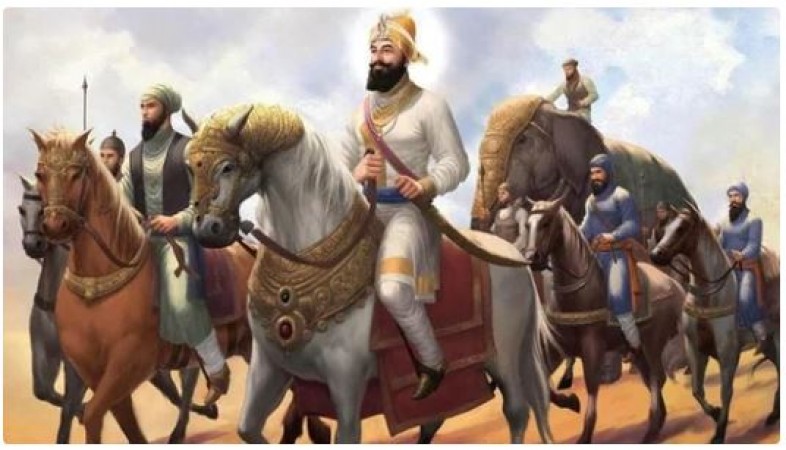
They thus banded together under the direction of the Raja of Bilaspur, whose domain included Anandpur, to drive Guru Gobind Singh out of his hilltop fortress. However, their several voyages from 1700 until 2004 were unsuccessful. The hill Rajas were unable to defeat the Khalsa army due to their superior numbers. Finally, they submitted a petition to Emperor Aurangzeb. They marched on Anandpur and besieged the fort in May 1705 in coordination with contingents dispatched under imperial commands by the governor of Lahore and those of the faujdar of Sirhind.
Also Read: Guru Gobind Singh Ji: Start Of Guruship
Throughout the months, despite having limited food due to the protracted blockade, the Guru and his Sikhs resolutely defied their repeated assaults. While the besieged (Sikhs) were in desperate circumstances, the besiegers (the governor of Lahore) were also worn down by the Sikhs' bravery. At this point, the besiegers promised the Sikhs a safe passage from Anandpur in exchange for their surrender. Finally, the village was abandoned on a December 1705 night. But when the Guru and his Sikh followers emerged, the hill kings and their Mughal allies unleashed their full fury on them.
Many Sikhs were slaughtered in the subsequent chaos, and the Guru's belongings, including the majority of his priceless writings, were also lost. With only 40 Sikhs and his two older sons, the Guru was able to travel to Chamkaur, 40 km southwest of Anandpur. There, closely on his heels, the imperial troops caught up with him. The action that took place on December 7, 1705, claimed the lives of all but five of the Sikhs, including his two sons Ajit Singh (born in 1687) and Jujhar Singh (born in 1691). The Guru was given the order to preserve himself by the five Sikhs who were still alive to reestablish the Khalsa.
Also Read: Mata Gujri Ji: Great Sikh Woman
Three Sikhs and Guru Gobind Singh made their way into the Malva wilderness, with the assistance of two of his Muslim followers, Gani Khan and Nabi Khan, who did so at great personal risk. In addition to leaving Anandpur, Guru Gobind Singh's two younger sons, Zorawar Singh, and Fateh Singh, as well as his mother, Mata Gujari Ji, also left the city. However, Gangu, their longtime servant and escort, betrayed them to the faujdar of Sirhind, who had the young children beheaded on December 13, 1705. The same day Mata Gujri passed away.
Here, after becoming friends with another Muslim admirer named Rai Kalha of Raikot, Guru Gobind Singh presented Rai Kalha with his sword as a token of his appreciation. (The sword has engravings on both sides. On the right side are the words "AKAL PURKH KI RACHCHIA HAM NE," "SARAB LOH KI RACHCHIA HAM NE," and "EK ONKAR SATGUR PARSAD AUTAR KHAS PATSHAH." SARAB KAL KI RACHCHIA HAM NE and SARAB JIA KI RACHCHIA HAM NE are written on the left.
Guru Gobind Singh Ji : An Inspirational Person
In the Malva, Guru Gobind Singh made it to Dina. In addition to recruiting a few hundred Brar clan troops there, he also wrote his renowned Zafarnamah (the Epistle of Victory), a Persian poem dedicated to Emperor Aurangzeb. The letter was a harsh criticism of the Emperor and his generals for breaking their pledge. Once Guru Gobind Singh was no longer protected by his stronghold at Anandpur, they attacked him. Daya Singh and Dharam Singh, two Sikhs, were sent with the Zafarnamah to Ahmadnagar in the South to give it to Aurangzeb, who was then camped there. Guru Gobind Singh moved westward from Dina until he discovered the host following closely after him; he took position beside the water pool of Khidrana to make a last-ditch stand.
Also Read: Guru Gobind Singh Ji: New Prophet of All Humanity